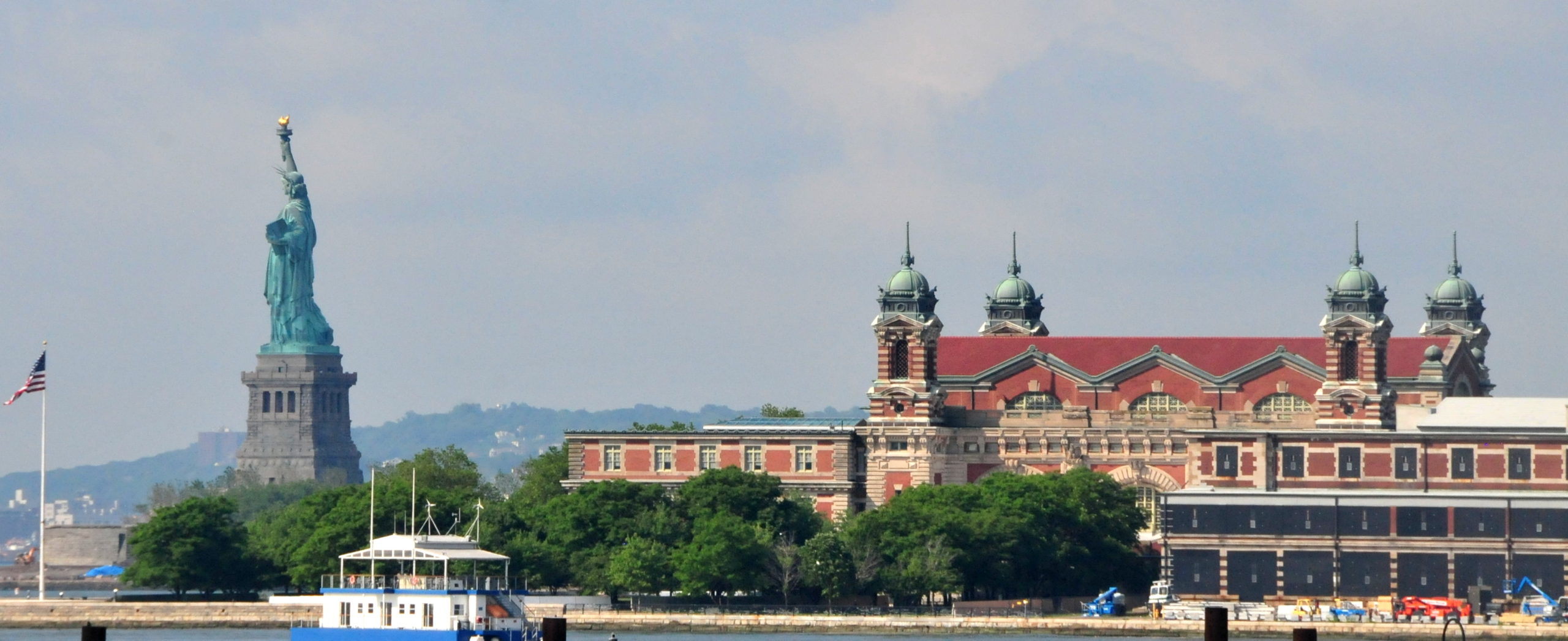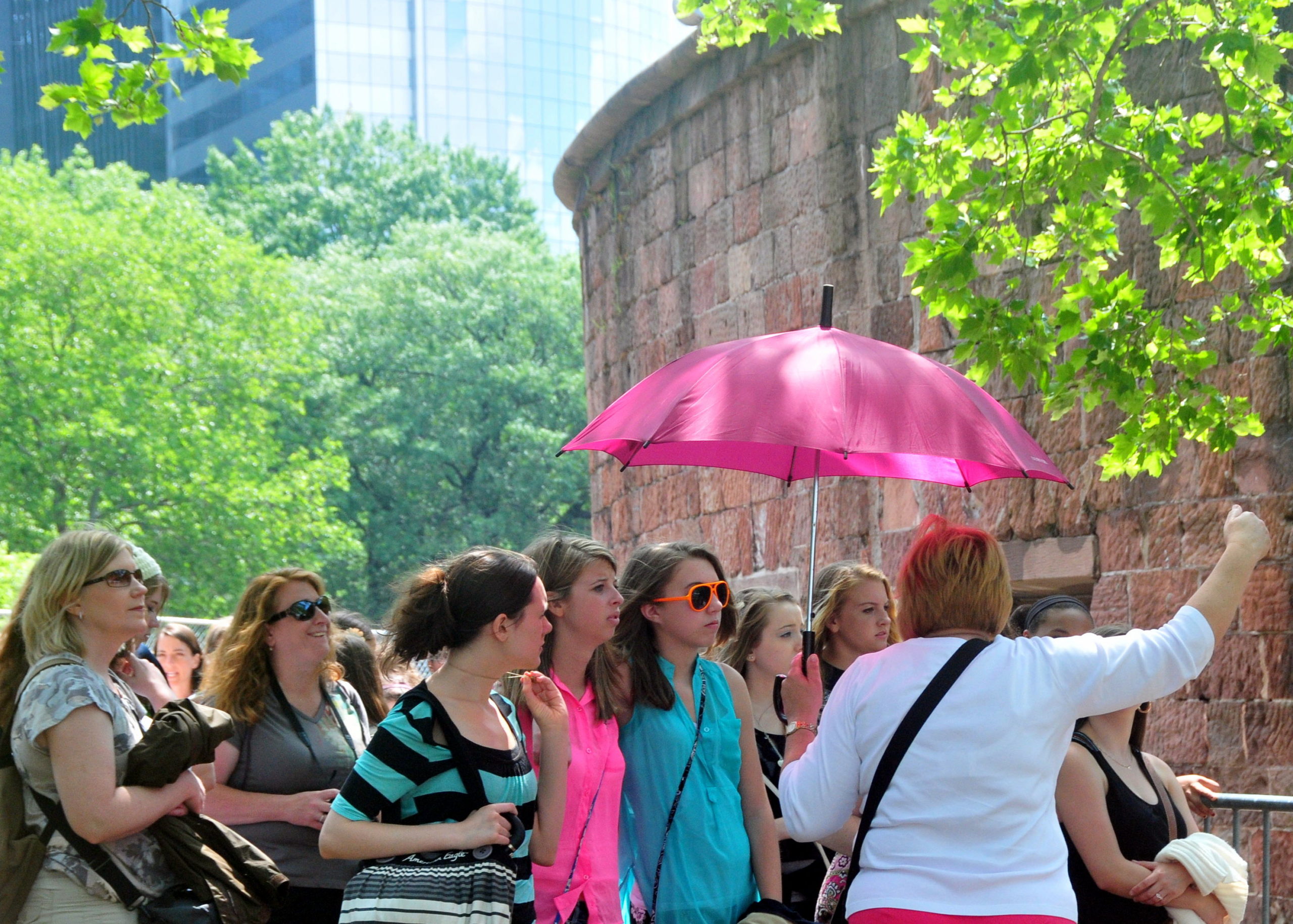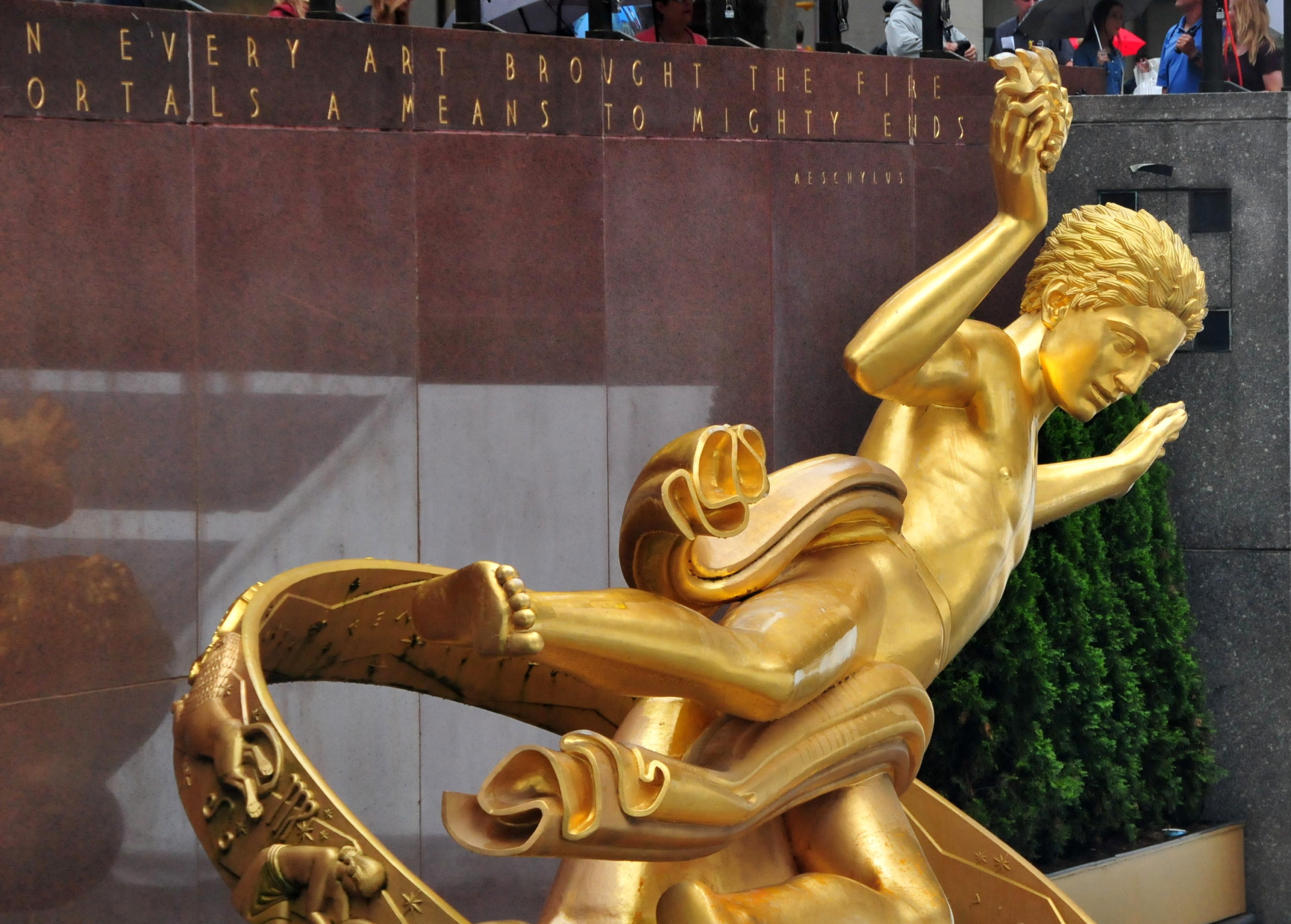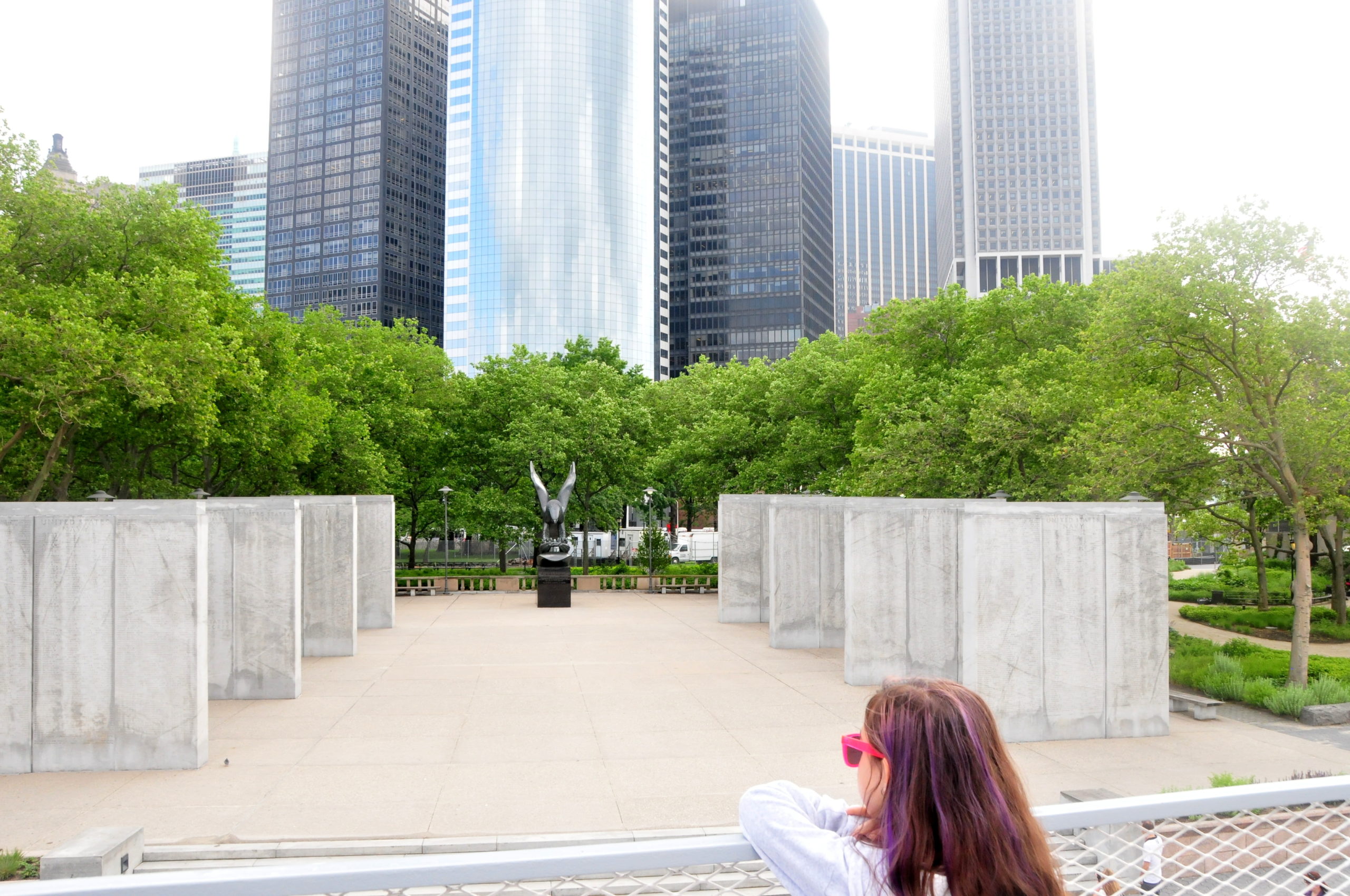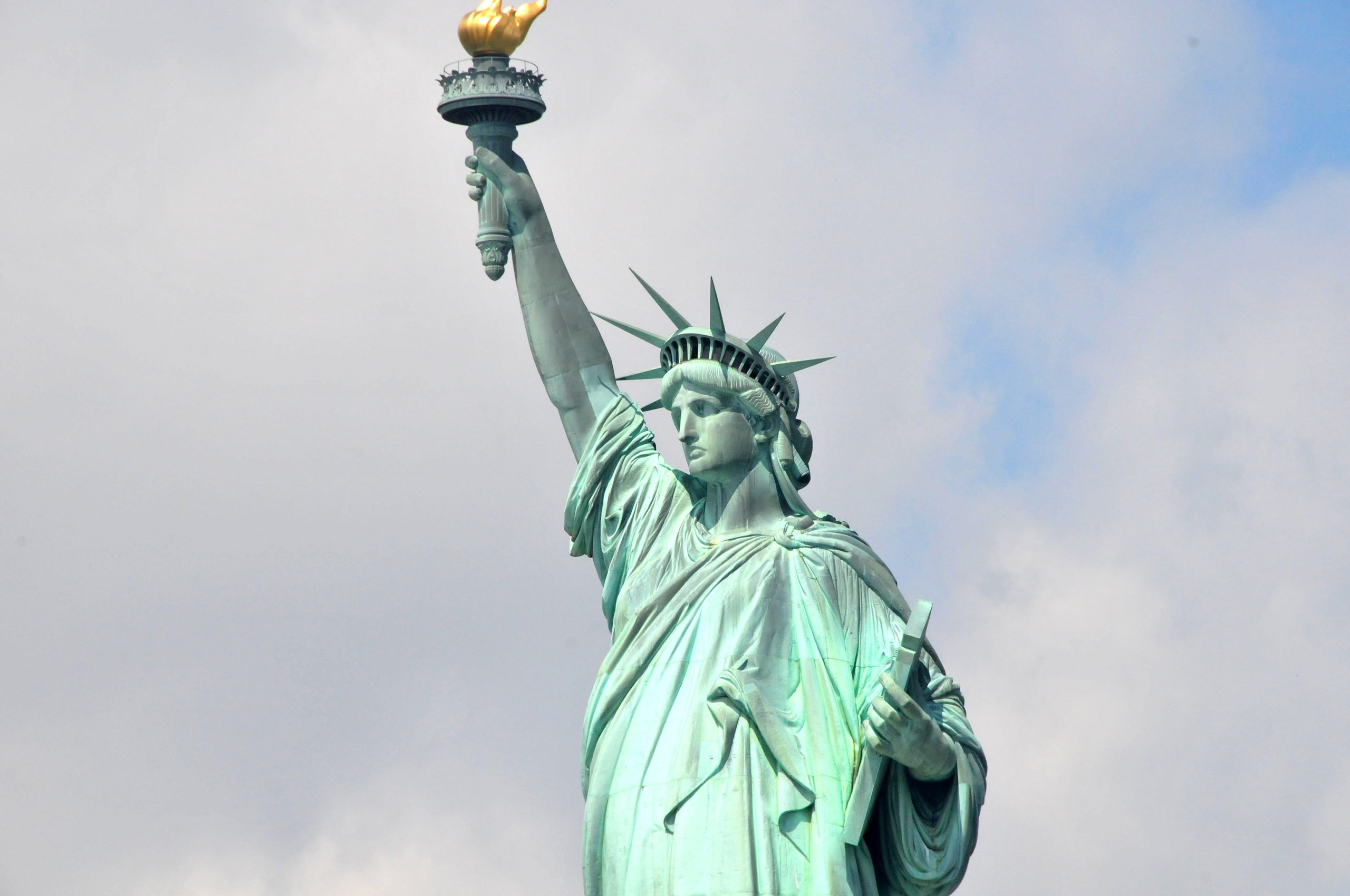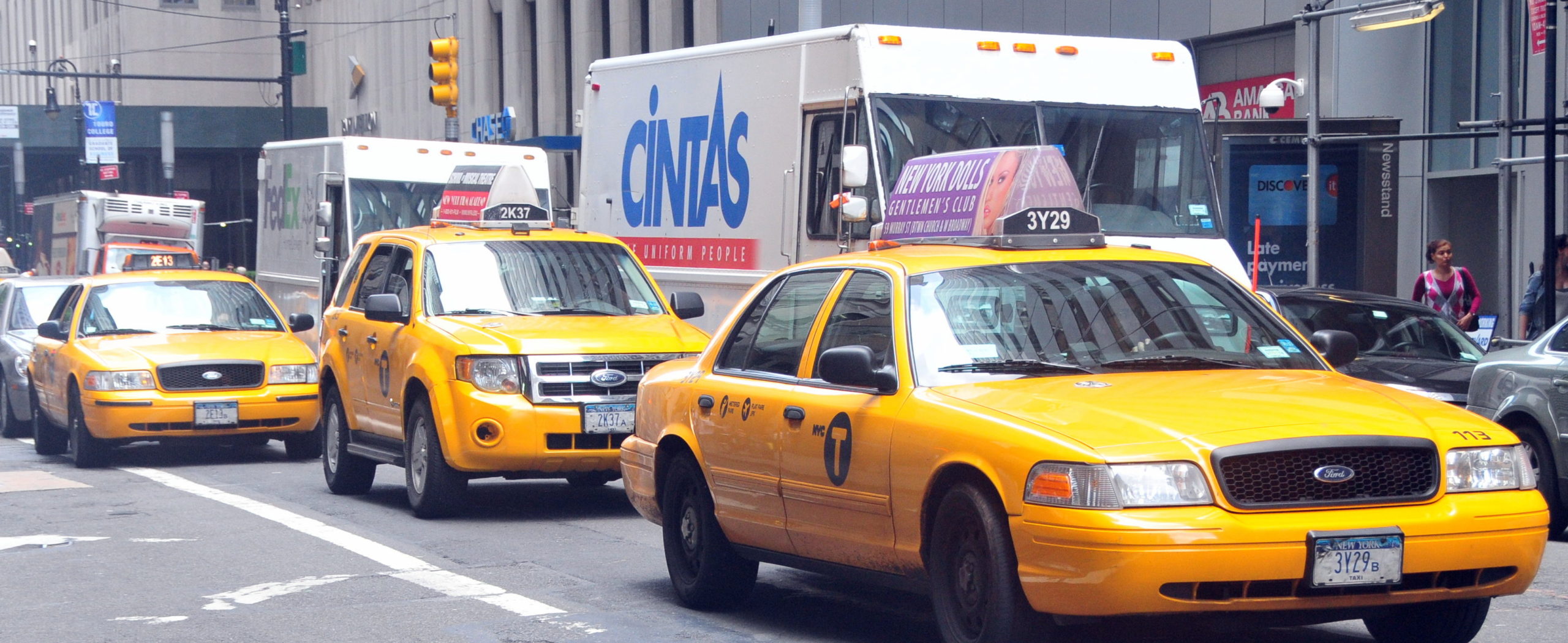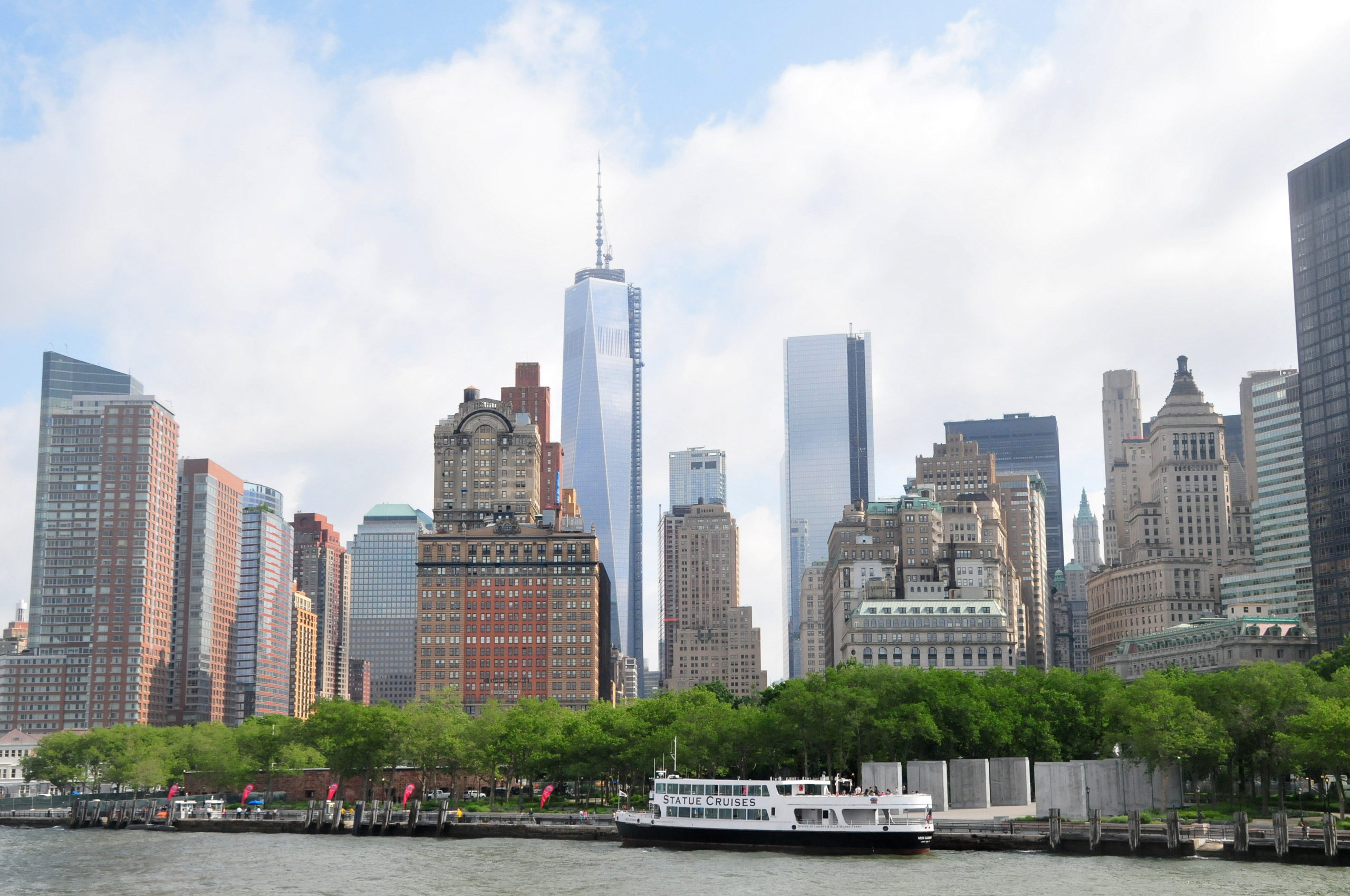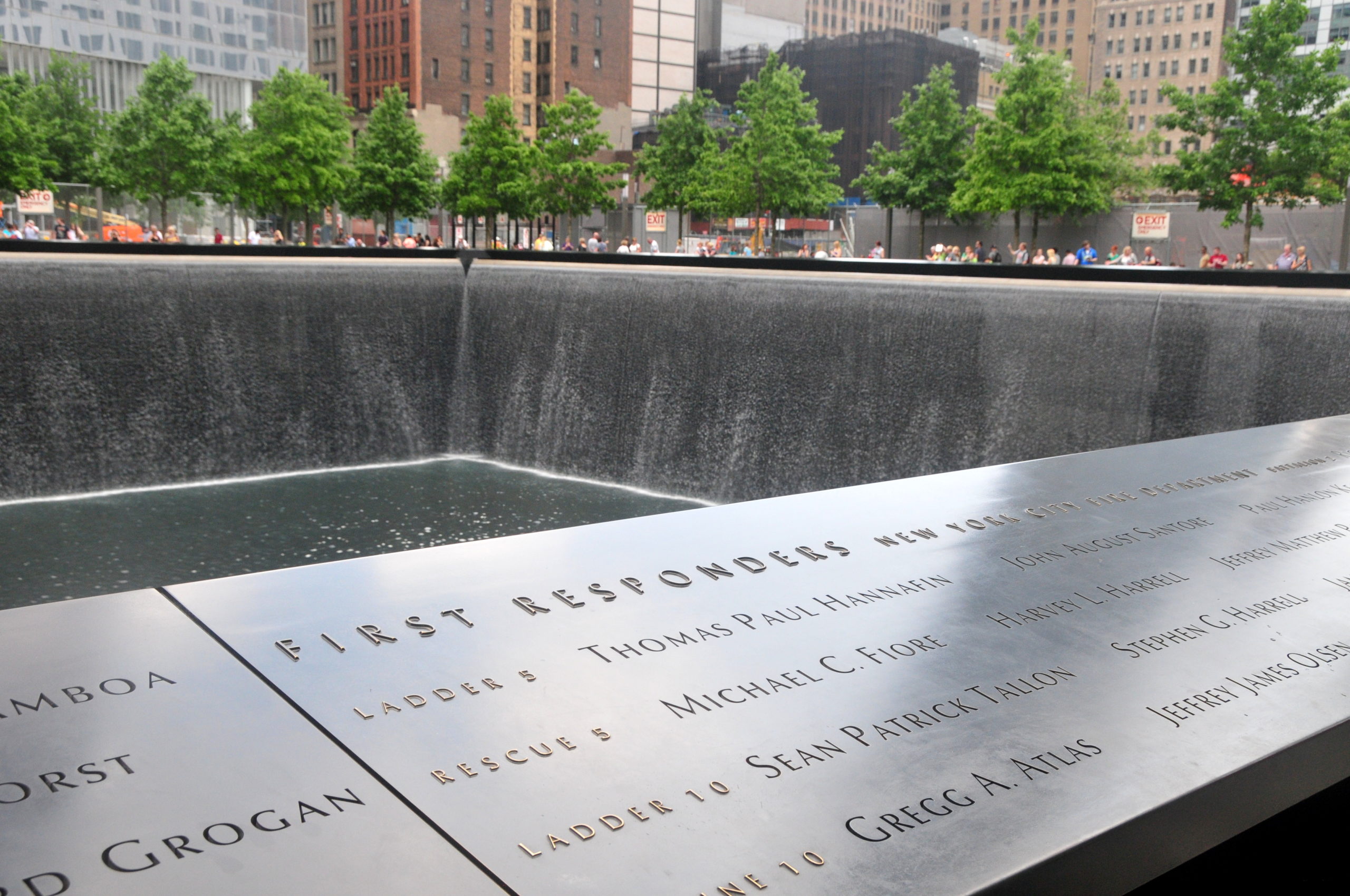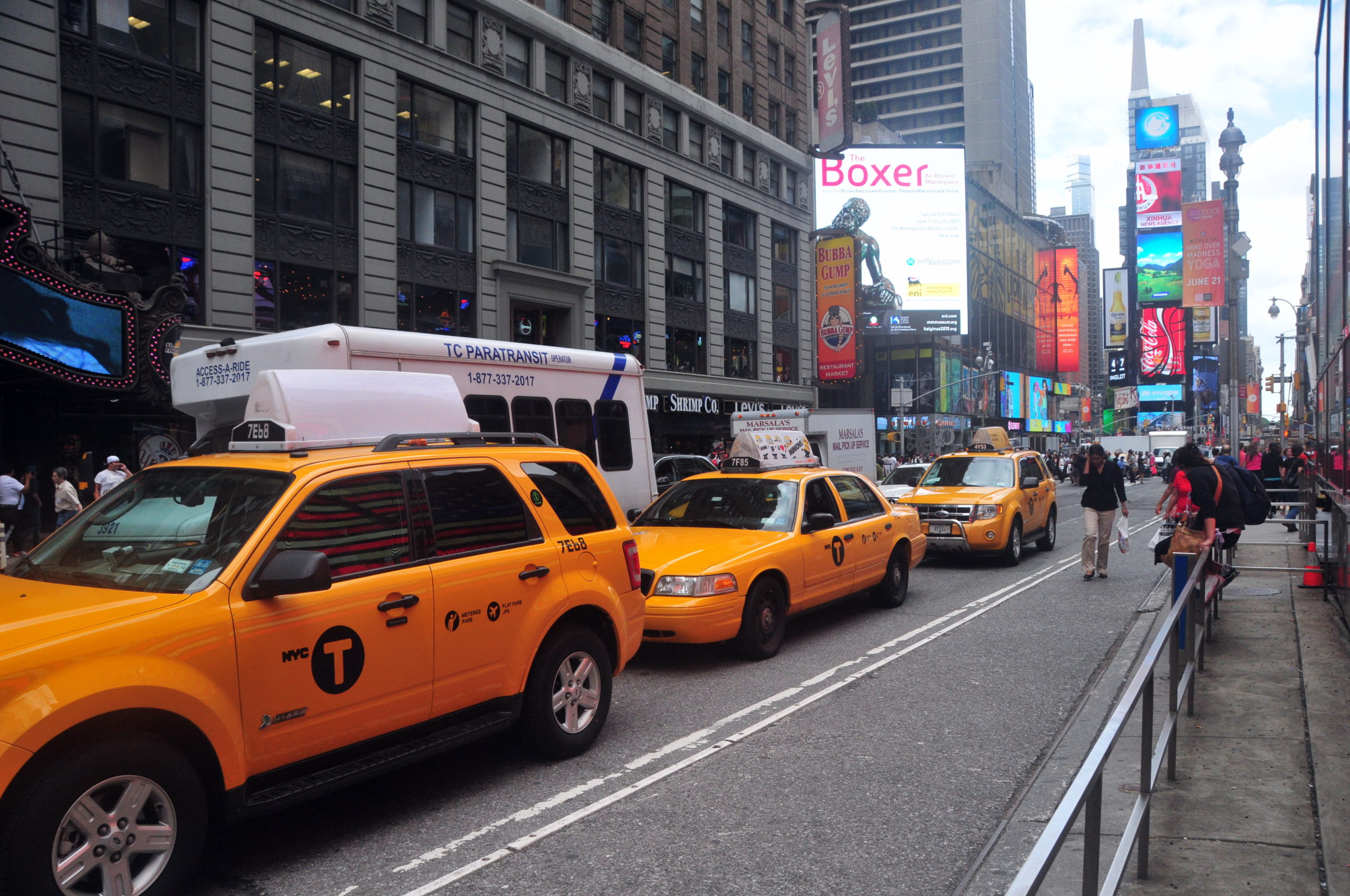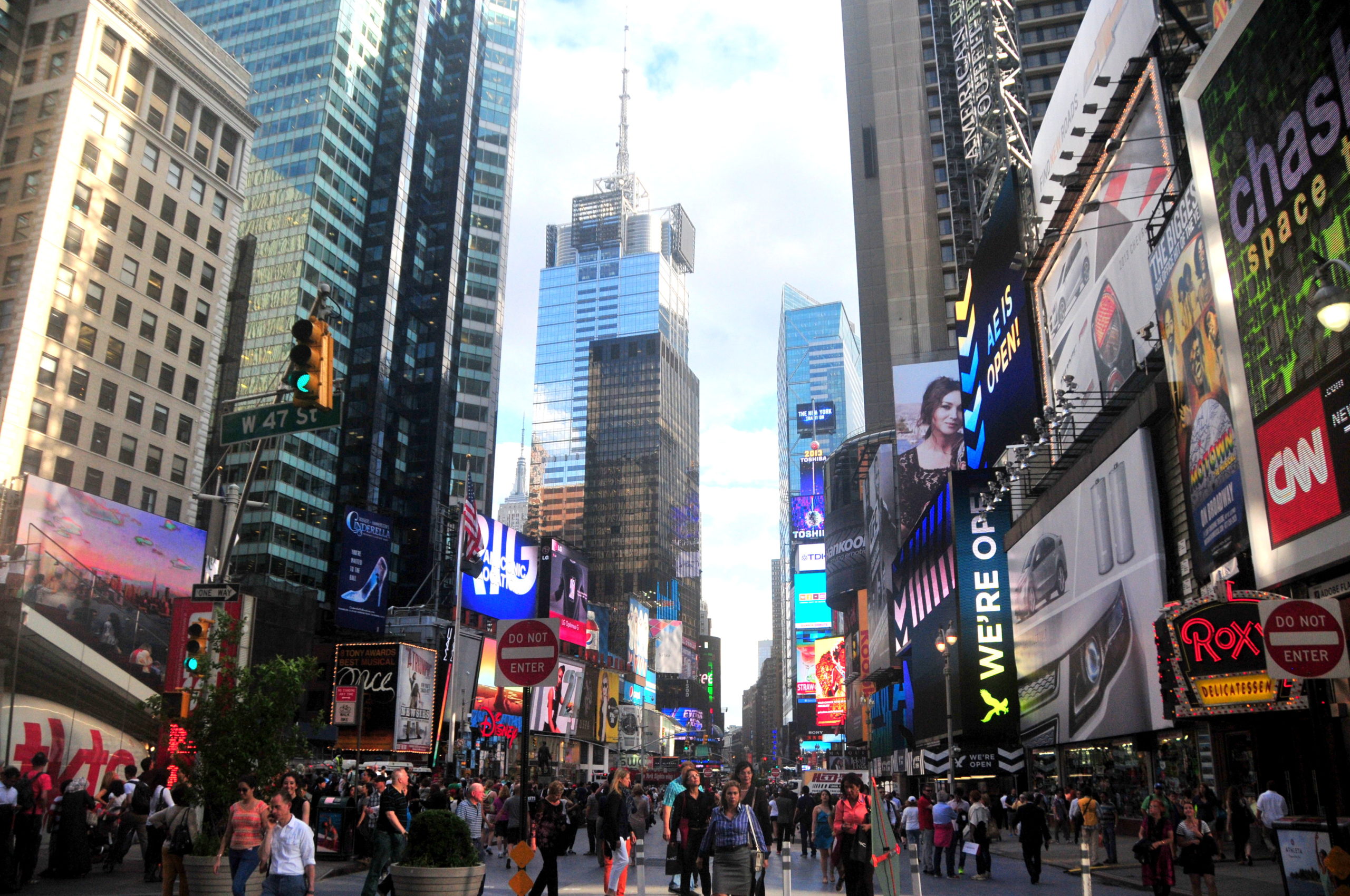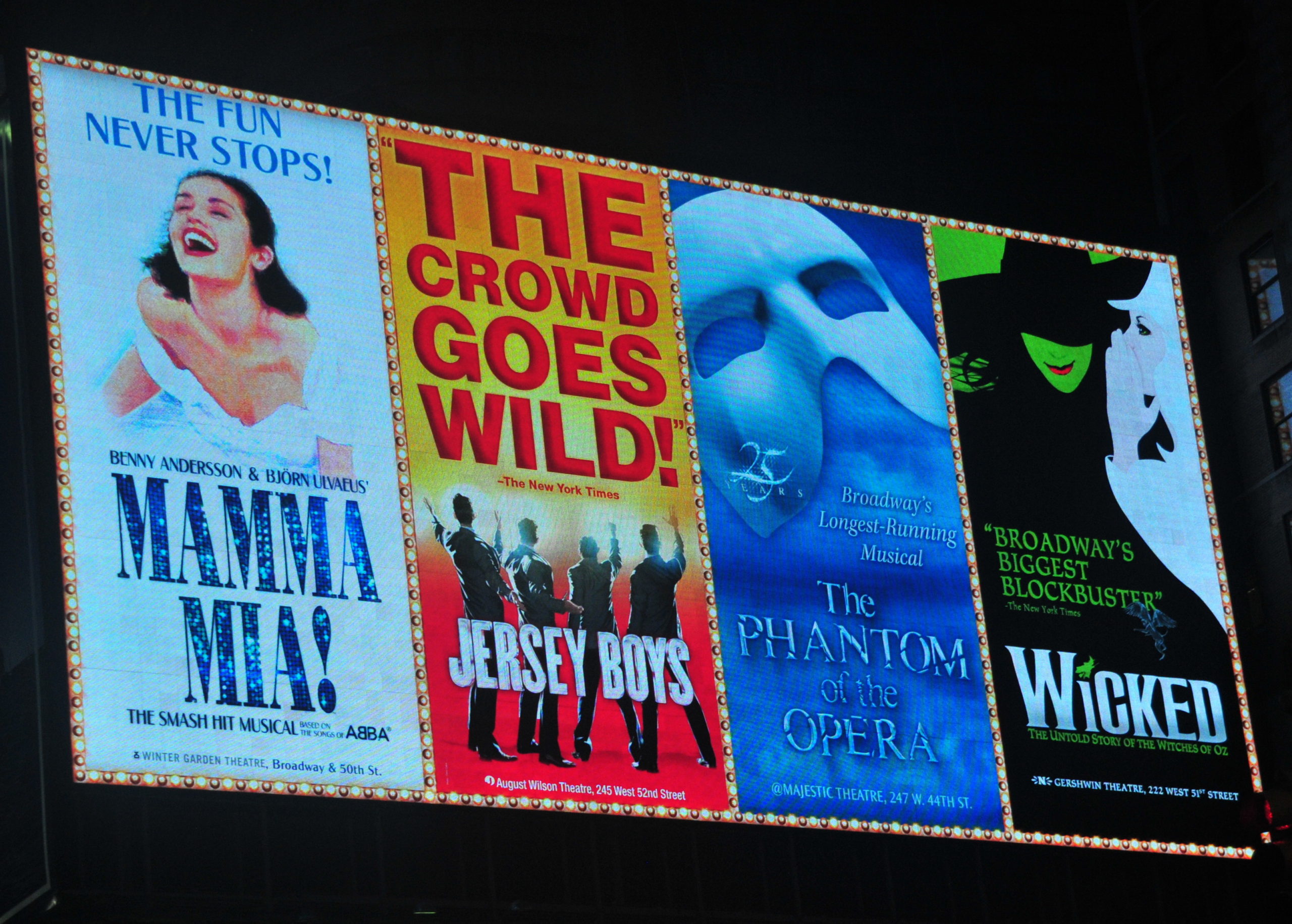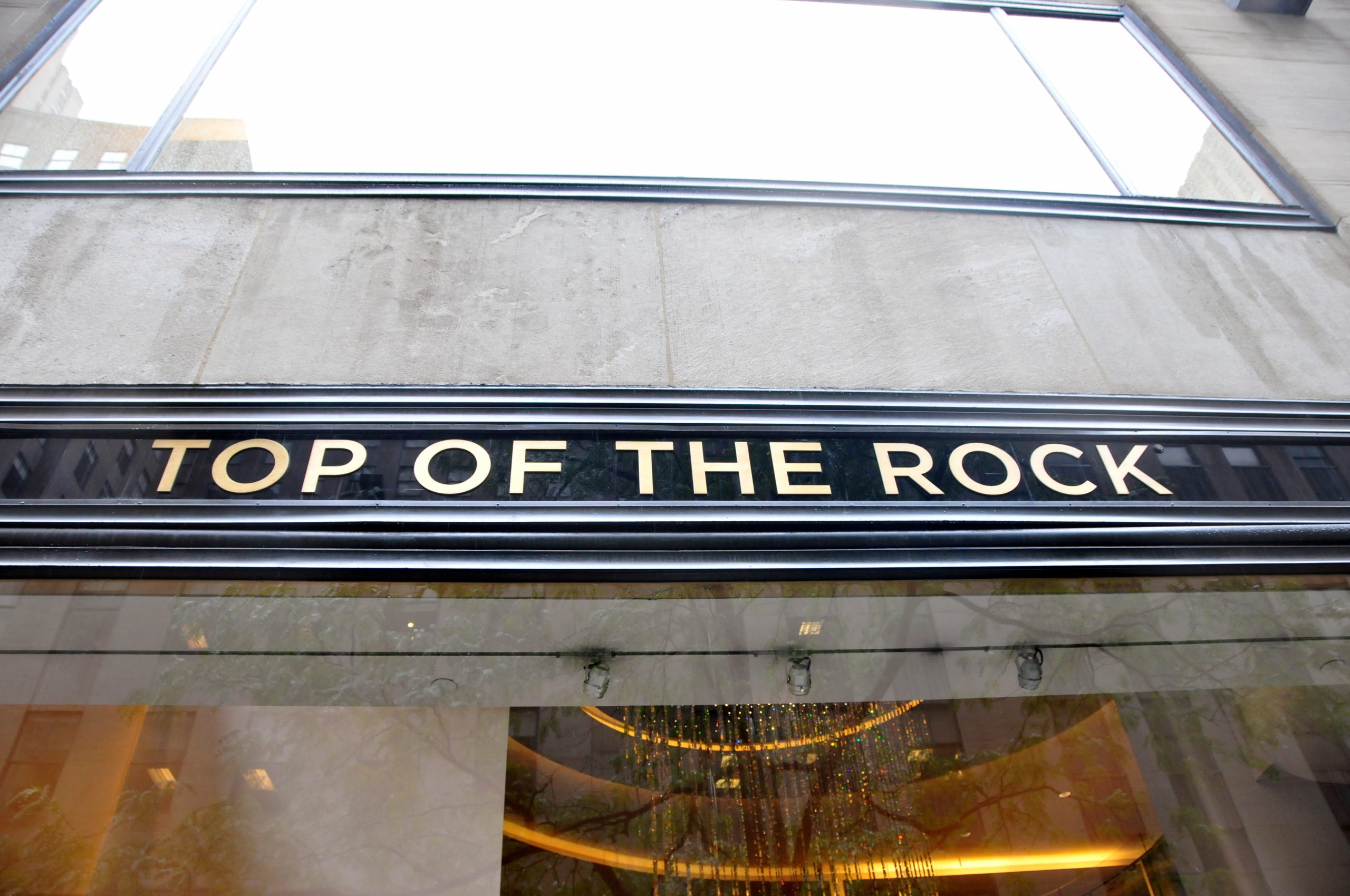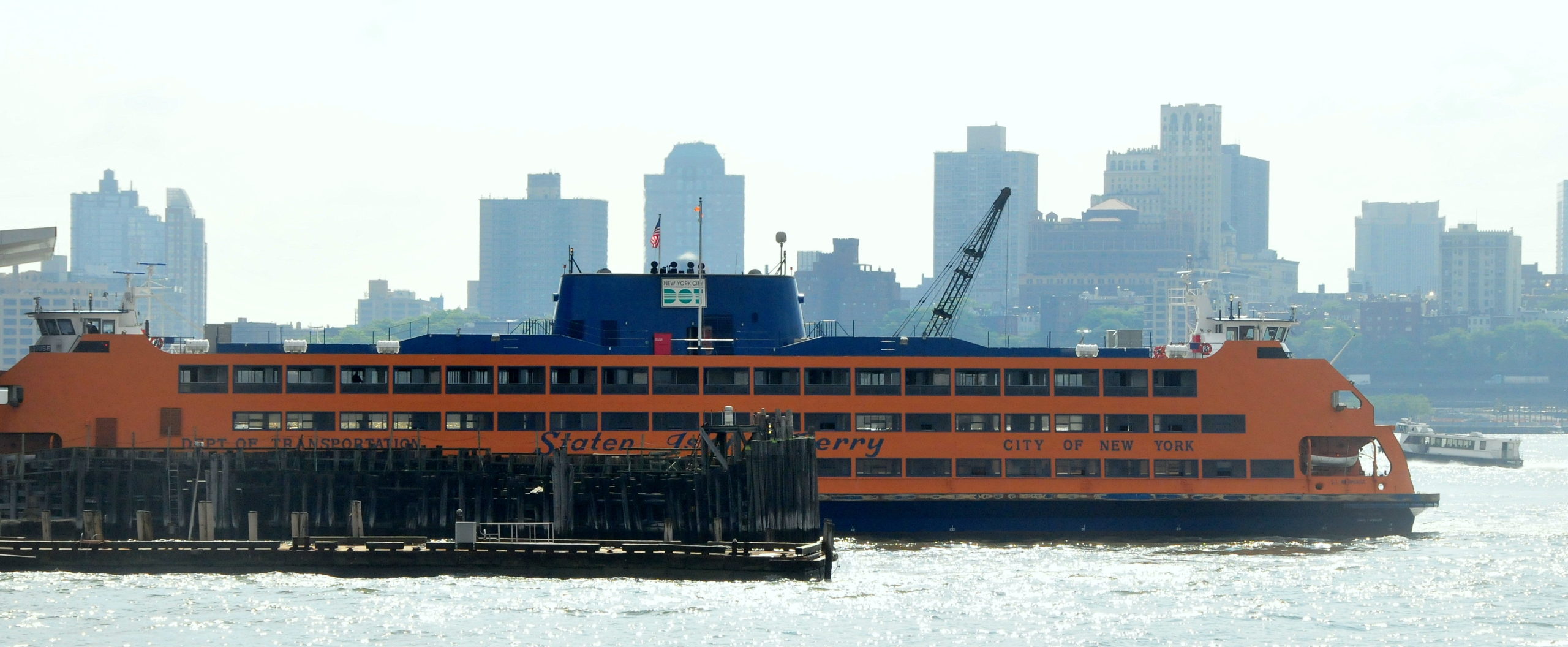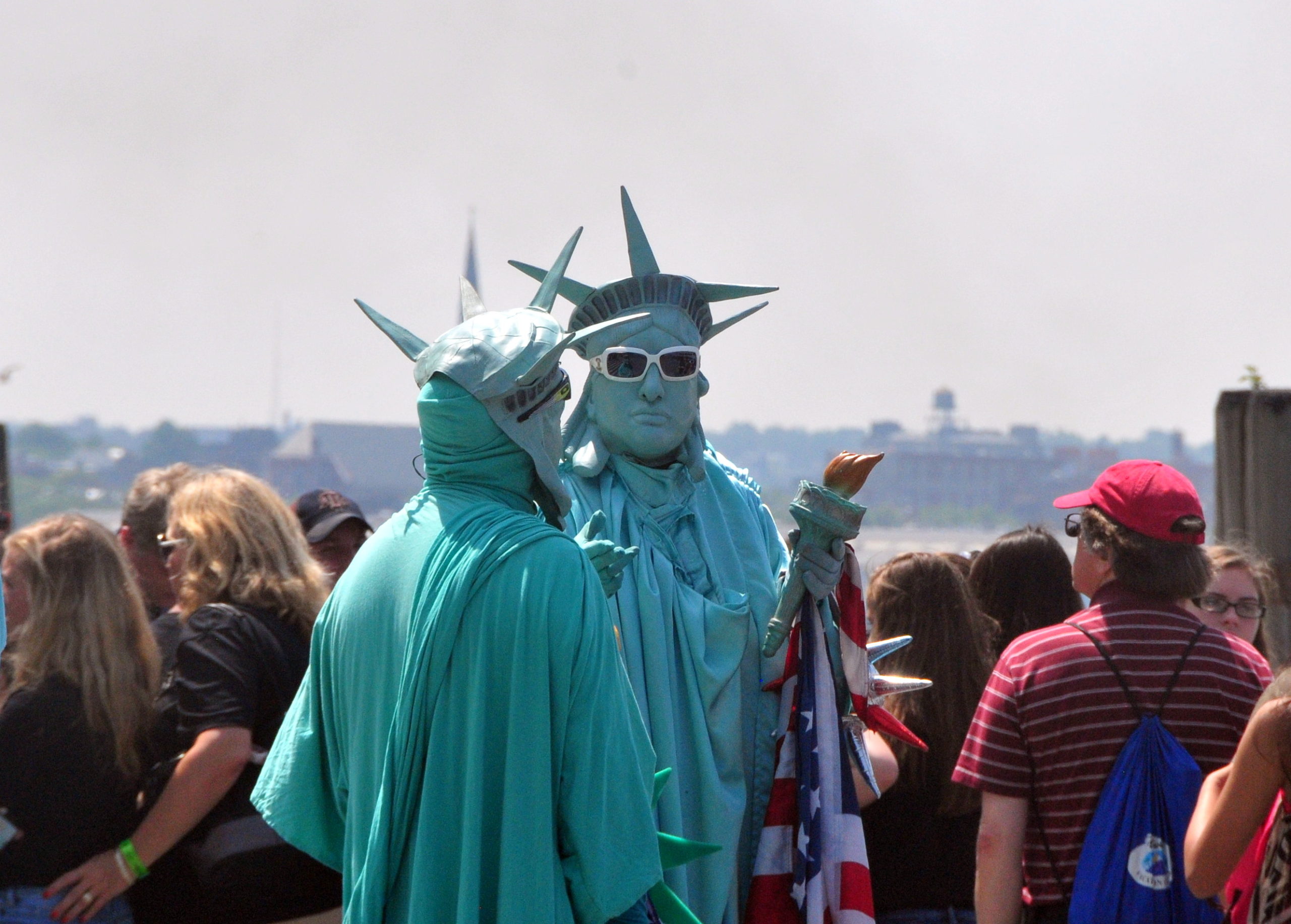Get Started.
Building your commentary is an ongoing process and learning experience. The following sections are starting points for learning the facts about sites commonly included in Scholastica itineraries. Add in stories and create a logical flow of information that matches your style.
NYC Facts
New York City is made up of 5 boroughs:
1. Bronx
2. Brooklyn
3. Manhattan
4. Queens
5. Stanton Island
It is the largest city in the USA with a population of over 8.4 million. It covers approximately 305 square mile and has a population density of 27,857 per square mile.
The borough of Manhattan is 13.4 miles long and 2.3 miles wide and covers approximately 33 square miles (22 square miles of land and 11 square miles of water) and has a density of 71,671 per square mile. Manhattan is one of the most densely populated places in the world!
Navigating Manhattan
• Avenues run north-south and streets run east-west, except at the borough’s southern and northern tips.
• Fifth Avenue forms the dividing line between Manhattan’s east side and west side. Going crosstown, building addresses increase with their distance from Fifth Avenue, usually by 100 per numbered avenue.
• Twenty north-south blocks equals 1 mile (1.61 kilometers).
• Three north-south blocks equals 1 east-west block
Some other interesting facts about NYC:
• Almost 30,000 acres of parkland are owned by the City
• The highest natural point above sea level is 410 feet
• There are more than 34,500 members of the New York City Police Department (Pittsburgh has less than 1,100, Los Angeles has 12,600)
• Our 18th President, Uylsses S. Grant, is buried in New York City
• Estimates range from 17,000 to 25,000 restaurants
• More than 100,000 hotel rooms
• The City is home to 5 of the top 10 tallest buildings in the US – One World Trade Center, the Empire State Bldg, 432 Park Avenue, Bank of America Bldg and the Chrysler Bldg
• The Lincoln Tunnel – completed in 1937 – is 97 feet under the Hudson River and is 2.5 miles long
• The Holland Tunnel – completed in 1927 – passes under the Hudson river and is 1.7 miles long
• The Jewish population in NYC is the largest in the world outside of Israel.
• New York has the largest Puerto Rican population of any city in the world.
• New York City’s 520-mile coastline is longer than those of Miami, Boston, Los Angeles, and San Francisco combined.
• Annual location shoots on the streets of New York number 40,000 — including commercials, feature films, television shows and series, music videos and documentaries.
NYC History
The earliest settlers of present day New York were Indians. Giovanni da Varazano found the area first (that’s why we honor him with a bridge), but didn’t realize just what he had found in 1523. The first European to “officially” discover the area was Henry Hudson in 1609. Fifteen years later, in 1624, the Dutch established the settlement of New Amsterdam.
In 1626, Peter Minuit, a Dutchman, purchased the island of “Man-a-hatt-a” (Manhattan) from the Indians for 60 Gelders’ worth of goods – about $24. The purchase took place on the bowling green in front of what is now known as the Customs House (home of the Smithsonian Museum of Native Americans). Obviously, even the earliest New Yorkers had an uncanny ability to spot a bargain.
The Dutch settlement stayed & did OK, but not great. In 1664, the English seized New Amsterdam and renamed it New York (after King Charles II’s brother – the Duke of York). In 1673, the English lost the city to the Netherlands, who, in turn, renamed the city New Orange.
In 1674, the treaty of Westminster returned New Orange to the English, who, in turn, promptly renamed the city New York. Are you following this?
The city changed hands so frequently because, although it featured desirable traits – a deep, protected harbor, forests, fresh water, temperate coastal climate, etc. – the settlements hadn’t really thrived.
The city grew steadily under English control until 1783 – during a skirmish later to be known as the American Revolution – and, as the 19th Century approached, really began to prosper.
On March 4, 1789, the Congress of the United States established by the ratification of the Constitution, held its first meeting in New York City. George Washington took the Presidential Oath of Office on April 30, 1789 at Federal Hall, in Lower Manhattan. Interestingly, at the time, Philadelphia, not New York, was the largest and most cosmopolitan city in the young United States.
Unfortunately, because of the overwhelming global importance of New York today, its early history – both important and interesting – is often forgotten. The key role of New York City in the formation of the young Republic can not be overlooked, though.
The Capital held several sessions in Philadelphia in 1799-1800 before finally holding its first meeting in Washington, DC on November 17, 1800.
The nineteenth century was the New York Century. Between 1800 and 1900, New York City’s population grew from 79,000 to more than 3 million people. The City acquired, and has retained to this day, its role as the country’s cultural, entertainment and business center. New Yorkers proudly proclaim the City as “The Capital of the World” – and they might not be far off.
In 1807, Robert Fulton made his first successful steamboat journey between Albany and New York City on the Clermont. Steamboats made travel much quicker – it now took 72 hours to reach Albany which was both the state capital and the gateway to the West. This trade with the West, and with the rest of the world by clipper ship, made the early fortunes of many New Yorkers.
In 1823, New York surpassed Boston and Philadelphia to become America’s largest city. In 1827, New York abolished slavery. In 1835, the city suffered its worst fire. Much of old New York is lost in the flames.
The City really began to grow after the completion of the Erie Canal in 1825. It connected the growing ports with the Great Lakes and the west. Later, railroads would connect the Port of New York in an even faster, more efficient manner. As this growth occurred, the United States began to earn its reputation in Europe as the land of opportunity.
The mid 1800’s were a time of great prosperity for both New York and the United States. The first New York Times was published in 1851. In 1853, New York hosted the first World’s Fair. In 1858 Vaux and Olmstead design Central Park – an 843-acre man-made oasis in the center of Manhattan Island. 1858 was also the charter year for Macys Department store.
On January 1, 1898, the 5 boroughs of New York united to form Greater New York City and the largest city in the world was born. Between 1892 and 1954, 16 million immigrants would pass through New York – Ellis Island, specifically – to begin new lives in the United States of America.
The Twentieth Century ushered in the golden age of New York City – and it isn’t done yet! By 1900, New York was the home of more than 70% of the country’s corporations and the port handled more than 2/3 of all imported goods.
During this period, the rich got richer – but the huddled masses – the immigrant workers, were increasingly crowded poor and disease ridden. The reform movement of the early 1900’s was born in the dangerous factories and overcrowded tenements of New York City.
In 1900 the International Ladies’ Garment Workers’ Union was founded to battle for the rights of women & children who worked for low wages in dangerous factories. The 1911 Triangle Shirtwaist Factory fire, in which 145 workers were killed, forced reform, wages & working conditions to the forefront.
On New Year’s Eve of 1903/04, Adolph Ochs, publisher of the New York Times, hosted a grand party in the New York style to celebrate the grand opening of his new headquarters. The celebration was the beginning of the now-traditional New Year’s Eve celebration in, where else, Times Square (Now you know where it gets its name – take a guess about Herald Square…).
The Twentieth Century also ushered in the Skyscraper era for the City. The 21-story Flatiron Building (5th Avenue and 23rd Street) was completed in 1902. The building was originally named the Fuller Building after the construction company that owned it. It was the tallest building in the world when it was completed.
The Port Authority of New York and New Jersey was established in 1921. The boundary lines dividing New York and New Jersey have always been fiercely contested. Hostilities prevailed until early this century, when both states realized that more was to be gained through cooperation than through competition.
The Port Authority is a self-supporting public agency of both states formed to plan, develop and operate terminal, transportation and other facilities to improve commerce within the Port District, and area within a 25-mile radius of the Statue of Liberty.
The Twenties would soon come to a crashing end as Wall Street hosted the 1929 Stock Market Crash. Mayor Jimmy Walker set the frenzied pace of the mid to late Twenties – he dated chorus girls, drank in speakeasies and was generally a pretty corrupt guy. He resigned, under official charges of corruption, in 1932.
The speakeasies were semi-secret illegal drinking dens affiliated with the underworld, bootlegged liquor, drugs, dancing girls and music. Apparently, they were lots of fun. One survivor of the roaring Twenties is Greenwich Village’s Chumley’s. A saloon not much different than it was when it was a speakeasy in 1928. Writers like Dylan Thomas, Simone de Beauvoir, Ernest Hemingway, William Faulkner, J.D. Salinger, Jack Kerouac and others drank and met here. To maintain its’ Prohibition era character, Chumleys (on the corner of Grove and Bedford Streets) still has no sign outside.
In 1932, 25% of New York was unemployed and it took a new and popular mayor, Fiorello La Guardia to begin the recovery. During his three terms as Mayor, LaGuardia helped New York thrive once again.
The advent of World War II dramatically changed the routine and face of the entire US – and New York. The “Radio City” exported popular culture, propaganda and “Yankee Pride” around the world. America’s first regularly scheduled television broadcasts began after the 1939 world’s fair. New York’s most valuable export – entertainment – helped the nation bear through the darkest days of the great depression and Second World War.
After the war, New York experienced the highest of the highs and the lowest of the lows. The city nearly went bankrupt, through corruption and mismanagement in the 1970’s; the 1980’s ushered in a new era for Wall Street – and a new crash. The 1990’s – 2000’s saw the biggest turnaround in the history of the city. Crime is at a 30-year low. 42nd Street has been revived and cleaned. Tourism is at all time peaks.
NYC Stories
“The Empire State” – New York State’s nickname is the Empire State, which led to the Empire State Building. Legend is that when Henry Hudson sailed up the Hudson River, he was so taken by the beauty and majesty of the area that he said, “This is the new empire.”
“The Brooklyn Bridge” – once the Brooklyn Bridge was completed, people were afraid to walk across it fearing it may collapse into the river below. In order to prove that the bridge was indeed safe, PT Barnum marched 21 elephants across the bridge.
“Our First President’s Inauguration” – George Washington’s swearing in as first president of the United States at Federal Hall was delayed because they couldn’t find a bible.
“How Times Square got its name” – Formerly Longacre Square, Times Square was renamed in April 1904 after The New York Times moved its headquarters to the newly erected Times Building – now called One Times Square – site of the annual ball drop on New Year’s Eve, a tradition which began on December 31, 1907 and continues today, attracting thousands to the Square every New Year’s Eve.
“The official Big Apple legend” – According to David Ellis’s Lonely Planet New York City Guide – NYC was named so not because of jazz musicians, but because a writer covering horse races in 1920 (named John FitzGerald) repeated in the ‘Morning Telegraph’ what stable hands in New Orleans referred to a trip to a NY racecourse as the ‘Big Apple’, or greatest reward for any thoroughbred. The city government has agreed to this story, and all public tourist literature has been amended to reflect this.”
“Other Rumored Big Apple Legends” – Rumor has it that the “Big Apple” is so named because during the depression, many former financiers would travel from their suburban cottages in full suits in order to sell apples on the streets of New York. The rumor goes that several well-to-do families had to make ends-meet by selling apples and the charade became known to many as the “Big Apple” scam of New York. Since apples have always been a big part of the New York economy the name simply stuck and was eventually promoted by local government
“Another Rumor” – The term ‘Big Apple’ was originally used in the 1920s and ’30s by jazz musicians as a way of saying, ‘There are many apples on the success tree, but when you pick New York City, you pick the Big Apple.
“And One More Rumor” – ‘The Big Apple’ was the name of a jazz club. Jazz musicians used the name as synonymous with New York City because of the club’s popularity. Going to New York invariably meant playing a set at The Big Apple.”
“How the Dakota got its Name” – The Upper East Side is where all the well to do millionaire’s lived. When the Dakota was being built on the Upper West Side, there wasn’t much of anything on that side of town. Those on the Upper East Side would say, “if you’re going to live on the West Side, you might as well live in the Dakota’s” and the name stuck.
NYC Boroughs
The Bronx
The only one of the five boroughs on the US mainland (the others are on islands), the Bronx is the birthplace of hip-hop and where some of Edgar Allan Poe’s most famous works were penned. The Bronx has more parkland and green space than any other borough—including the massive 2,700-acre Pelham Bay Park—and several popular public golf courses. New Yorkers in the know make their way to Arthur Avenue, the Bronx’s own Little Italy, to shop and dine. Another must-see neighborhood is City Island, a maritime village where visitors can enjoy fresh seafood
Bronx highlights include:
- Arthur Avenue
- Bartow-Pell Mansion Museum
- Bronx County Historical Society
- Bronx Culture Trolley
- Bronx Museum of the Arts
- Bronx Zoo
- City Island
- Edgar Allan Poe Cottage
- Hall of Fame for Great Americans
- The New York Botanical Garden
- Pelham/Split Rock Golf Course
- Valentine-Varian House
- Van Cortlandt Park Golf Course
- Van Cortlandt House Museum
- Wave Hill
- Woodlawn Cemetery
- Yankee Stadium
Brooklyn
NYC’s most populous borough, Brooklyn, is easily accessible by ferry, subway and car—but the grandest way for tourists to get there from Manhattan is to walk across the Brooklyn Bridge and enjoy the stunning views of the harbor and skyline. They’ll enter the borough near Brooklyn Bridge Park and the picturesque brownstones of Brooklyn Heights. Not too far away, bohemian Williamsburg is a hotbed of emerging music and art, while BoCoCa (shorthand for three adjacent neighborhoods: Boerum Hill, Cobble Hill and Carroll Gardens) boasts some of the City’s newest and trendiest shops. Park Slope, meanwhile, offers a bevy of cozy restaurants and boutiques near the popular Prospect Park. And seaside Coney Island is home to the family-friendly Luna Park, featuring the landmark Cyclone roller coaster. And while Downtown Brooklyn is a hub of business and government, it is also home to a thriving arts and culture scene, including the recently opened BRIC House, presenting contemporary art and performing arts, and the multi-arts center BAM.
Downtown Brooklyn is fast becoming one of New York City’s most popular destinations, filled with conference, express and boutique hotels, and easily accessible to Lower Manhattan and JFK and LaGuardia airports. Get a better feel for Downtown Brooklyn and its many offerings in the video below.
Brooklyn highlights include:
- Barclays Center
- BRIC House
- Brooklyn Academy of Music (BAM)
- Brooklyn Botanic Garden
- Brooklyn Children’s Museum
- Brooklyn Cyclones minor-league baseball team
- Brooklyn Museum
- Brooklyn Navy Yard/Bldg 92
- Coney Island
- Deno’s Wonder Wheel Amusement Park
- DUMBO
- Dyker Beach Golf Course
- Grand Prospect Hall
- Green-Wood Cemetery
- Harbor Defense Museum
- Jewish Children’s Museum
- Kumble Theater for the Performing Arts
- Luna Park in Coney Island
- Museum of Contemporary African Diasporan Arts (MoCADA)
- New York Aquarium
- New York Transit Museum
- Prospect Park
- St. Ann’s Warehouse
- Weeksville Heritage Center
- Wyckoff Farmhouse Museum
Queens
Queens may be the most ethnically diverse community in the world—almost half of its residents are foreign-born, and no other American county counts natives of more nations among its numbers. As a result, visitors can travel the globe by touring the borough’s neighborhoods. Queens stretches from Long Island City, with its picture-postcard views of the Manhattan skyline, to the wetlands of Jamaica Bay. In between are Astoria’s Greek tavernas, Little India in Jackson Heights, Flushing’s Chinatown (larger than Manhattan’s), not to mention Jamaica, Forest Hills, Sunnyside and more.
Once an epicenter of manufacturing, Long Island City now boasts an exciting arts scene and a fast-growing list of must-visit restaurants, shops and performance venues. What’s more, the area offers a concentration of affordable new hotels just minutes from Midtown via subway. Take a closer look at Long Island City in the video below.
Queens highlights include:
- Bayside Historical Society
- Citi Field, home of the New York Mets
- Fisher Landau Center for Art
- Flushing Town Hall
- Louis Armstrong House Museum
- Museum of the Moving Image
- New York Hall of Science
- The Noguchi Museum
- MoMA PS1
- Queens Botanical Garden
- Queens County Farm Museum
- Queens Museum
- Queens Zoo
- The Resorts World Casino New York City
- Socrates Sculpture Park
- USTA Billie Jean King National Tennis Center
Stanton Island
One of the best ways to reach this borough is from Manhattan, via the Staten Island Ferry. A free attraction in itself, the ferry affords passengers sweeping views of the harbor and the Statue of Liberty en route to the St. George Ferry Terminal. Home to the Staten Island Yankees minor league baseball team, a beautifully restored theater and the projected site of the world’s largest Ferris wheel, St. George serves as a gateway to the borough’s other neighborhoods. These include nearby New Brighton, home of the Snug Harbor Cultural Center & Botanical Garden, an 83-acre destination for arts and culture. For history buffs, the Alice Austen House Museum and Historic Richmond Town are also must-visits.
Staten Island highlights include:
- Alice Austen House Museum
- Historic Richmond Town
- LaTourette Park & Golf Course
- Silver Lake Golf Course
- Snug Harbor Cultural Center & Botanical Garden
- South Shore Golf Course
- Staten Island Children’s Museum
- Staten Island Museum
- Staten Island Yankees minor league baseball team
- Staten Island Zoo
- George Theatre
NYC Sites
The 911 Memorial – Lower Manhattan at the World Trade Center Site
The National September 11 Memorial is a tribute of remembrance and honor to the nearly 3,000 people killed in the terror attacks of September 11, 2001 at the World Trade Center site, near Shanksville, Pa., and at the Pentagon, as well as the six people killed in the World Trade Center bombing in February 1993.
The Memorial’s twin reflecting pools are each nearly an acre in size and feature the largest manmade waterfalls in the North America. The pools sit within the footprints where the Twin Towers once stood. Architect Michael Arad and landscape architect Peter Walker created the Memorial design selected from a global design competition that included more than 5,200 entries from 63 nations.
The names of every person who died in the 2001 and 1993 attacks are inscribed into bronze panels edging the Memorial pools, a powerful reminder of the largest loss of life resulting from a foreign attack on American soil and the greatest single loss of rescue personnel in American history.
The Memorial Plaza is one of the most eco-friendly plazas ever constructed. More than 400 trees are planned for the plaza, surrounding the Memorial’s two massive reflecting pools. Its design conveys a spirit of hope and renewal, and creates a contemplative space separate from the usual sights and sounds of a bustling metropolis.
THE NEARLY 3,000 names of the men, women, and children killed in the attacks of September 11, 2001 and February 26, 1993 are inscribed on bronze parapets surrounding the twin Memorial pools.
The display of these names is the very heart of the Memorial. The design of the names parapet provides a direct relationship between the visitor, the names, and the water, allowing for a feeling of quiet reverence between the visitor and the Memorial.
Names are stencil-cut into the parapets, allowing visitors to look through the names at the water, and to create paper impressions or rubbings of individual names. At night, light shines up through the voids created by each letter of a name.
American Museum of Natural History – Upper West Side at Central Park W & 79th Street
The American Museum of Natural History is one of the largest museums in the world. Located in park-like grounds across the street from Central Park, the museum complex comprises 27 interconnected buildings housing 45 permanent exhibition halls, in addition to a planetarium and a library. The museum collections contain over 32 million specimens of plants, humans, animals, fossils, minerals, rocks, meteorites, and human cultural artifacts, of which only a small fraction can be displayed at any given time, and occupies 1,600,000 square feet. The Museum has a full-time scientific staff of 225, sponsors over 120 special field expeditions each year, and averages about five million visits annually.
Battery Park – Lower Manhattan
Battery Park is a 25-acre public park located at the Battery, the southern tip of Manhattan Island in New York City, facing New York Harbor. The Battery is named for the artillery batteries that were positioned there in the city’s early years to protect the settlement behind them.
Castle Clinton – Lower Manhattan in Battery Park
Castle Clinton or Fort Clinton, once known as Castle Garden, is a circular sandstone fort now located in Battery Park, in Manhattan, New York City. It is perhaps best remembered as America’s first immigration station, where more than 8 million people arrived in the U.S. from 1855 to 1890. Over its active life, it has also functioned as a beer garden, exhibition hall, theater, public aquarium, and finally today as a national monument.
Bowling Green – Lower Manhattan at the end of Broadway
Bowling Green is the oldest park in NYC. It rests on the site of original Dutch settlement.
In1770, the British government erected a 4,000 pound gold-plated leaden statue in the plaza depicting King George III mounted on horseback. The statue was very unpopular with the public, On July 9, 1776 after the Declaration of Independence was read to Washington’s troops at the current site of City Hall, a mob of local citizens rushed to Bowling Green where they toppled the statue. The event is considered one of the most enduring images in the city’s history. According to folklore, the statue was chopped up and shipped to a Connecticut foundry to be made into some 40,000 Patriot bullets. Parts of the statue are preserved in the New York Historical Society.
Charging Bull – Lower Manhattan at Bowling Green
The sculpture depicts a bull, the symbol of aggressive financial optimism and prosperity.
Auturo Di Modica reportedly created the sculpture following the 1987 stock market crash. The sculpture, however, was not commissioned by the city as a work of public art. Rather, Di Modica created it on his own and installed it in December 1989 as “guerilla art“, trucking it to Lower Manhattan and placing it in front of the New York Stock Exchange as a Christmas gift to the people of New York. The police seized the illegal sculpture and placed it in an impound lot. In response to the public outcry favoring the sculpture, the NYC Dept. of Parks & Recreation re-installed it several blocks to its current location in the plaza at Bowling Green where it faces up Broadway.
Brooklyn Bridge – Lower Manhattan
The Brooklyn Bridge was designed by John Roebling, with help from his son Washington Roebling, and daughter in law Emily Warren. Upon completion, it was the longest suspension bridge in the world, the first steel-wire suspension bridge, the first bridge to be lighted and the first bridge to connect to Long Island. Roebling took a little over 13 years to build the bridge and it opened in 1883. The bridge spans 1595 feet, cost $15.5 million to build and 27 people lost their lives during construction. To prove that the bridge was safe, PT Barnum paraded 21 of his elephants over the bridge.
Central Park – Upper Manhattan 843 Acres
Central Park was completed in 1872. It was designed by Frank Law Olmsted & Calvert Vaux. It includes: 58 miles of pathways, over 26,000 trees, over 9,000 benches.
Movies filmed in Central Park – I Am Legend, Borat, Enchanted, Hitch, The Devil Wears Prada, Elf, Men in Black, Maid in Manhattan.
Points of interest in the park:
Strawberry Fields
Belvedere Castle
Bethesda Fountain & Terrace (there are restrooms in the Terrace)
Central Park Zoo
Alice in Wonderland Statue
Shakespeare Garden
Gapstow Bridge
Chinatown/Little Italy – Lower Manhattan along Canal Street
Chinatown is a neighborhood in Lower Manhattan that is home to the largest enclave of Chinese people in the Western Hemisphere. Great place to shop and eat.
Little Italy is a neighborhood in lower Manhattan, once known for its large population of Italians. Today the neighborhood consists of only a few Italian stores and restaurants.
City Hall – Lower Manhattan between Broadway, Park Row and Chambers Streets
The site was known as ‘the fields’ in pre-Revolutionary days because of its distance from downtown. This is where, on July 9, 1776, George Washington read the Declaration of Independence to the gathered masses.
The site was selected as the location for the new City Hall. When the building was completed in 1811, it was considered to be the most beautiful building in the country.
Interestingly, when City Hall was built; it was so far North of the city that the builders used inexpensive brownstone for the back – believing that no one would ever live behind it! Subsequent renovations have covered the brownstone.
Abraham Lincoln’s body lay in State in the Rotunda. There is an often-overlooked City Hall Museum inside.
The building is the oldest city hall in the United States that still houses its original governmental functions, such as the office of the Mayor of New York City and the chambers of the New York City Council.
Diamond District – Midtown Manhattan at 47th Street between 5th & 6th Avenues
The United States is the world’s largest consumer market for diamonds. Over 90 percent of the diamonds that enter this country go through New York City and most of them go through the Diamond District. More than 2,600 independent businesses are located in the Diamond District, and nearly all of them are related to diamonds or fine jewelry.
Ellis Island – Lower Manhattan
Nearly 40% of American’s can trace their roots to Ellis Island – the portal through which more than 12 million immigrants entered the United States.
Opened on January 1, 1892, Ellis Island ushered in a new era of immigration with each newcomer’s eligibility to land now determined by federal law. The government established a special bureau to process the record numbers that were arriving at the end of the 19th Century. More than 70% landed in New York, the country’s largest port. First and second class passengers were processed on board ship, but third or steerage class were ferried to Ellis Island, where they underwent medical and legal examinations in the main building.
During peak periods at Ellis Island, as many as 5,000 people each day would be checked, questioned and sent on their way. For the vast majority, the processing took between three and five hours. For a few, a longer stay meant additional testing, and for an unfortunate two percent, it meant exclusion and a return trip home.
Originally, the island was three acres, barely visible above high tide. The island grew to 27 ½ acres and 35 buildings. The facility was strained from the beginning until 1924, when legislation drastically stemmed the incoming flow of immigrants. The station was abandoned on November 29, 1954 and remained empty until President Johnson placed it into the care of the National Park Service on May 11, 1965.
The site was restored beginning in 1990 and now houses an immigration museum. The displays do an excellent job of re-constructing the immigrant experience. The restoration cost $156 million and did not restore the entire island.
Empire State Building – Midtown Manhattan at 350 Fifth Avenue, between 33rd & 34th Streets.
Construction began weeks before the crash of ’29. It opened in 1931 – and space was so
difficult to rent that people called it the “Empty State Building”. The observatories saved the building from bankruptcy. More than 80 million visitors have been to the top. The total height is 1454 feet. The exterior is made of Indiana Limestone and granite trimmed with Stainless steel.
Some interesting facts about the Empire State Building:
- 102 Stories Tall, 1250 feet tall, with antenna, 1,454 feet tall
- It is the 2nd tallest building in NYC with Freedom Tower being the tallest
- Visibility on a clear day is 80 miles
- Ships can be seen 40 miles at sea
- Construction began in 1930 and took 15 month to complete (3 months ahead of schedule)
- Cost approximately $41 million ($16 million under budget)
- 73 elevators operate at speeds ranging from 600 ft to 1200 ft a minute
- There are 7 miles of elevator shafts
- There are 3,500 miles of wire in the building
- There are 6,500 windows
- The 86th floor observatory is 1050 feet into the air
- The building used 60,000 tons of steel – enough to build a double track railroad from New York to Baltimore
- More than 3 million visitors every year
- It has its own zip code
Federal Hall – Lower Manhattan at 26 Wall Street
Federal Hall was the first Capitol of the United States. The building was demolished in the 1812 and replaced in 1842 by the current structure, the first United States Customs House. The building is now operated by the National Park Service as the Federal Hall National Memorial, a museum that commemorates the earlier structure. The Bill of Right was adopted here. GW took oath of office on the steps of Federal Hall in 1789.
Freedom Tower – officially known as: “One World Trade Center” – Lower Manhattan
One World Trade Center refers to the main building of the new World Trade Center complex in Lower Manhattan, New York City. It is the tallest skyscraper in the Western Hemisphere, and the fourth-tallest in the world. The 104-story supertall structure shares a numeric name with the North Tower of the original World Trade Center, which was destroyed in the terrorist attacks of September 11, 2001. The new skyscraper stands on the northwest corner of the 16-acre World Trade Center site, on the site of the original 6 World Trade Center.
Grand Central Station – Midtown Manhattan at East 42nd St btw Vanderbilt & Lexington Ave
Grand Central Station was built by and named for the New York Central Railroad in the heyday of American long-distance passenger rail travel, it covers 48 acres and has 44 platforms, more than any other railroad station in the world. Its platforms, all below ground, serve 41 tracks on the upper level and 26 on the lower, though the total number of tracks along platforms and in rail yards exceeds 100.
It’s a great place to shop, eat and see the Celestial Ceiling in the main concourse.
Guggenheim Museum – Upper East Side at 1071 Fifth Avenue at 89th St
The Solomon R. Guggenheim Museum, designed by Frank Lloyd Wright, is home to one of the world’s finest collections of Modern and contemporary art. The Wright building, the youngest to be designated a New York City landmark, is itself one of the greatest works of the Guggenheim collection.
In 1943, Guggenheim commissioned Wright to design a unique building to house his collection of avant-garde art. During the subsequent years of planning and design, Wright applied his vision of a fluid and organic architecture to the museum. Ground was broken in August 1956, and construction was completed in 1959, six months after Wright’s death.
After a two-year restoration and expansion project, the Guggenheim reopened in 1992, more spectacular than ever. Several graceful spaces within the Wright building, including the entire small rotunda, were opened to the public for the first time.
A nine-story tower, designed by Gwathmey Siegel and Associates Architects and based on Wright’s original schemes for an annex, also made its debut.
Jacob K. Javitz Convention Center – Midtown Manhattan at 11th Avenue between 34th and 40th Streets
The Javitz Center – designed by I.M. Pei – hosts 1,000 conferences and conventions each year. Then center has 1.8 million square feet and is big enough to hold 15 consecutive regulation football fields.
Madison Square Garden – Midtown Manhattan at 4 Pennsylvania Plaza (8th Ave & 33rd St)
“The Garden” is Manhattan’s showcase sports and performing arena. This is the 4th “Madison Square Garden”. So why is it round???
The original garden was built in 1874 by PT Barnum on Madison Avenue near Madison Square Park. Barnum called it the “Monster Classical and Geological Hippodrome” – it was torn down in 1889.
It was replaced by a well-liked building designed by Stanford White. Although considered to be an architectural masterpiece, White’s building was torn down in 1925, probably because he couldn’t “stick up for it”. White was killed by a jealous husband on the roof of his building in 1906. The present “Garden” was built in 1968.
Metropolitan Museum of Art – Upper East Side at 1000 5th Avenue
The Metropolitan Museum of Art is the largest art museum in the United States and one of the ten largest in the world. Its permanent collection contains more than two million works, divided among seventeen curatorial departments. The main building, located on the eastern edge of Central Park along Manhattan’s Museum Mile, is by area one of the world’s largest art galleries. There is also a much smaller second location at The Cloisters in Upper Manhattan that features medieval art.
Museum of Modern Art “MoMA” – Midtown Manhattan at 53rd St btw 5th & 6th Avenues
The MoMA has been important in developing and collecting modernist art, and is often identified as the most influential museum of modern art in the world. The museum’s collection offers an overview of modern and contemporary art, including works of architecture and design, drawing, painting, sculpture, photography, prints, illustrated books and artist’s books, film and electronic media.
Museum Mile– Upper East Side at Fifth Avenue from 82nd to 105th Streets
The Mile, which contains one of the densest displays of culture in the world, is actually three blocks longer than one mile (1.6 km). Nine museums occupy the length of this section of Fifth Avenue. A tenth museum, the Museum for African Art, opened in late 2012. It is at 110th Street and is the first new museum constructed on the Mile since the Guggenheim in made its appearance in 1959.
Plaza Hotel – Upper East Side at 5th Avenue & Central Park South
Renowned French Renaissance design – when the plaza opened in 1907, the Times said the plaza had the largest colony of millionaires in the world as permanent residents. They hosted $500 per person dinners there, where “Champaign, flowed like water,” in the early 1900’s.
The Vanderbilt’s must have liked the Plaza; they built their mansion just south of the hotel. Joseph Pulitzer’s estate donated money for a fountain to be placed in front of the Plaza in 1916. Rumor has it that Pulitzer didn’t like Vanderbilt, so the family had the derriere of the fountain’s goddess of Abundance pointed at the Vanderbilt mansion.
(Room rate for August 21-23, 2015. Least expensive room was 1 King bed for 2 People, for 2 nights, including tax $1,453. Breakfast each morning was an additional $50 per person per day)
Radio City Music Hall – Midtown Manhattan at 1260 Ave of the Americas (btw 50th & 51st)
Radio City Music Hall opened its doors in 1932. The art-deco masterpiece features the first hydraulically operated stage, one of the world largest stage curtains and two of the world’s largest Wurlitzer Organs. It can seat a little over 6,000 people. Allegedly, the US Navy studied this stage to plan the construction of our aircraft carrier flight decks.
Radio City hosts dazzling shows and the annual Christmas show featuring the Rockettes.
Rockefeller Center – Midtown Manhattan-22 acres btw 48th & 50th St and 5th & 6th Ave
Declared a landmark in 1985. It is the largest privately owned complex of its kind and the inspiration for dozens of cities that try to copy its’ sophisticated urban mix. John D. Rockefeller leased the site, once a botanic garden, from Columbia University in 1928 as the home for a new opera house.
When the crash of ’29 scrapped the opera house plans, Rockefeller (obligated in a long-term lease) decided to go ahead with his own project. The original 14 buildings were built between 1931 and 1939. A set of 4 International-style towers were built along the west side of Avenue of the Americas during the 1960’s and 1970’s and the Lehman Brothers Building was added to complete the complex of 19 buildings. The buildings are connected via underground walkways.
The GE Building (formerly the RCA Building) is the dominating structure in the complex. As of July 1, 2015, the GE Building was officially renamed “The Comcast Building”. The world-famous NBC Studios and Top of the Rock are located in the Comcast Building.
Top of the Rock – in the Comcast Building
3 level observation deck, 360 degree view of the City. Enter on 50th St between 5th & 6th Avenues
Stanton Island Ferry – Lower Manhattan at Whitehall Street
The Staten Island Ferry is run by the City of New York to transport Stanton Islanders to and from Manhattan. Yet, the 5 mile, 25 minute ride also provides a majestic view of New York Harbor, The Statue of Liberty and Ellis Island for free
You must disembark the ferry on Stanton Island at the St George Ferry Terminal and then reboard the ferry to come back to Whitehall Ferry Terminal in Manhattan.
Statue of Liberty – Lower Manhattan at Liberty Island
The statue, brainchild of French sculptor Frederic-Auguste Bartholdi, was intended to be a monument to the freedom he found lacking in his own country. He devoted 21 years of his life to making the statue a reality. He even traveled to the US in 1871 to talk to President Grant and others regarding both funding and the statue’s installation in New York Harbor.
President Grover Cleveland dedicated the Statue on October 28, 1886 on the former Bedloe’s Island. A Poem by Emma Lazarus is engraved on the base, it says: “Give me your tired, your poor, your huddled masses yearning to breathe free.”
The statue is 305 feet tall (from ground to torch) and weights 225-tons. The internal framework was designed by Gustave Eiffel, who later built the Eiffel Tower. The copper shell hangs on iron bars from a central iron pylon.
The statue was restored in 1986 for its 100th anniversary. A new torch was installed to replace the corroded original.
Some interesting Facts about the Statue of Liberty:
- Bartholdi’s mother was the model for Lady Liberty
- The seven rays of her crown represent the seven seas / seven continents
- The pedestal is set within the walls of an army fort.
- The original torch now stands in the main lobby.
St. John the Divine Episcopal Cathedral – Upper West Side at 1047 Amsterdam St & 112th St.
Designed in 1888 and begun in 1892, the cathedral has undergone radical stylistic changes and the interruption of the two World Wars. Originally designed in the Byzantine Revival-Romanesque Revival styles, the plan was changed after 1909 to a Gothic Revival design. After a large fire on December 18, 2001, it was closed for repairs and reopened in November 2008. It remains unfinished, with construction and restoration a continuing process. As a result, it is often nicknamed St. John the Unfinished.
St. Patrick’s Cathedral – Midtown Manhattan at Fifth Ave between 50th & 51st Streets
The Roman Catholic Church originally intended to use the site of St Patrick’s Cathedral for a cemetery, but in 1850, Archbishop John Hughes decided to build a cathedral instead.
Many people felt it was foolish to build a church so far north of the (then) city limits. People actually complained about its location!
James Renwick built New York’s premier Gothic Revival building. The church is one of the largest Catholic Cathedral in the United States. The cathedral was completed in 1878, it seats 2,500 and the spires were added from 1885 to 1888. Over 5.5 million people visit the Cathedral every year.
Stock Exchange – Lower Manhattan at 11 Wall Street
In the mid-1600’s, the Dutch built a wall on the north end of the settlement to protect settlers from Indians and the British (it didn’t work). The wall came down in 1664, but the name stuck.
The financial business got its start after the US Revolution when Alexander Hamilton urged the issuance of bonds to pay off war debts.
Twenty-four bond traders met under a buttonwood tree and in May 1792 drafted the first rules of trade. They operated an informal bond market until 1817 when the New York Stock Exchange was formally organized.
Since 1903, the NYSE has been located at 20 Broad Street.
Subway
The New York City Transit Authority operates one of the largest and most complex subway systems in the world with 714 track miles connecting four boroughs. Trains stop at 469 stations, so you’re almost certain to find one near where you go.
You’ll see globes outside of most subway entrances. If the globe is green it means the entrance is staffed 24 hours a day. A red globe indicates the entrance is closed or restricted in some way.
Most routes operate 24 hours a day. Night services are less frequent and fewer trains run on weekends. In the last few years the subway system has been completely upgraded and the trains are now air-conditioned, well lit, safer and more comfortable.
Times Square & The Theater District – Midtown Manhattan at Broadway & 7th Ave, and stretching from West 42nd to West 47th Streets
The Theater District has its roots in 1883 and the move of the Metropolitan Opera House to Broadway and 40th Streets. In the 1920’s movie theaters added to the glitz and glamour of “The Great White Way” – so named for its bigger and brighter neon light displays. Times Square is sometimes also referred to as The Crossroads of the World and The Center of the Universe. One of the world’s busiest pedestrian intersections, it is also the hub of the Broadway Theater District and a major center of the world’s entertainment industry. Times Square is one of the world’s most visited tourist attractions, drawing an estimated fifty million visitors annually.
Formerly Longacre Square, Times Square was renamed in 1904 after The New York Times moved its headquarters to the newly erected Times Building, the site of the annual ball drop which began on December 31, 1907, and continues today, attracting over a million visitors to Times Square every New Year’s Eve.
Trinity Church – Lower Manhattan at 79 Broadway at Wall Street
Trinity Church is an Episcopal Church. Three building have stood at the site.
- The first Trinity Church building, a modest rectangular structure with a gambrel roof and small porch, was constructed in 1698. The church was destroyed in the Great New York City Fire of 1776,which started in the Fighting Cocks Tavern, destroying nearly 500 buildings and houses and leaving thousands of New Yorkers homeless.
- Construction on the second Trinity Church building began in 1788; it was consecrated in 1790. The structure was torn down after being weakened by severe snows during the winter of 1838–39.
- The third and current Trinity Church began construction in 1839 and was finished in 1846.
During the September 11, 2001 attacks, as the 1st Tower collapsed, people took refuge from the massive debris cloud inside the church.
St. Paul’s Chapel – Lower Manhattan at 209 Broadway, between Fulton Street & Vesey Street
It is a chapel of Trinity Church and is the oldest surviving church building in Manhattan. It was completed in 1766.
After the attack on Sept 11, 2001, which led to the collapse of the twin towers of the World Trade Center, St. Paul’s Chapel served as a place of rest and refuge for recovery workers at the WTC site. For eight months, hundreds of volunteers worked 12-hour shifts around the clock, serving meals, making beds, counseling and praying with fire fighters, construction workers, police and others. Massage therapists, chiropractors, podiatrists and musicians also tended to their needs. The church survived without even a broken window. Church history declares it was spared by a miracle sycamore on the northwest corner of the property that was hit by debris. The fence around the church grounds became the main spot for visitors to place impromptu memorials to the event. After it became filled with flowers, photos, teddy bears, and other paraphernalia, chapel officials decided to erect a number of panels on which visitors could add to the memorial. Estimating that only 15 would be needed in total, they eventually required 400.
United Nations – Midtown Manhattan at 46th Street and 1st Avenue
The body was founded in 1945. The UN Headquarters were built from 1949 to 1952 using $8.5 million donated by John D. Rockefeller. There are 193 member nations. The UN doesn’t have legislative power, but they try to resolve conflict & promote human rights.
The session is held once a year for three months. The general assembly hall has 2070 seats. The green glass headquarters building was built on the former slaughterhouse district. Frank Lloyd Wright called the building a “giant tombstone”.
The guided tour of the United Nations starts with a brief overview of the Organization and its structure. The main part of the tour consists of a visit to the chambers of the Security Council, the Trusteeship Council and the Economic and Social Council, which are located in the Conference Building.
When you pass through the gates of the United Nations Headquarters in New York, you enter international territory. The 18-acre site extends from 42nd Street to 48th Street, and from First Avenue to the East River.
The land does not belong to just one country, but to all countries that have joined the Organization. The United Nations has its own security and fire forces, issues its own postage stamps and conducts business in its six official languages: Arabic, Chinese, English, French, Russian and Spanish.
Every year nearly a million visitors from all over the world come through the gates to see the place where world leaders meet and international issues are discussed.
USS Intrepid – Midtown Manhattan Pier 86 at 12th Avenue & 46th Street
Launched in 1943, the former aircraft carrier USS Intrepid fought in World War II, surviving five kamikaze attacks and one torpedo strike. The ship later served in the Cold War and the Vietnam War. Intrepid also served as a NASA recovery vessel in the 1960s. It was decommissioned in 1974, and today is berthed on the Hudson River as the centerpiece of the Intrepid Sea, Air & Space Museum.
Waldorf-Astoria Hotel – NEW – Midtown Manhattan at 301 Park Avenue and 49th Street
301 Park Avenue. The Waldorf-Astoria has welcomed every president since Herbert Hoover, the Duke and Duchess of Windsor (the staff said they’re bad tippers!), the Pope and the Queen of England.
The hotel has an exclusive section – floors 27-42 – called the Towers. The Towers has a separate entrance, its own lobby, concierge, elevators, etc.
The hotel has its own underground railway, a 300,000 bottle wine cellar, china service for 1,600 and a 1 block long underground kitchen with an herb garden!
The hotel was built on the site of a 1700’s graveyard. More than 100,000 graves are under the ground around the hotel!
Waldorf-Astoria Hotel – ORIGINAL – Midtown Manhattan at site of Empire State Bldg
Located where the Empire State Building now stands. In the late 1800’s, William Astor and his brother, John, built two of New York’s finest mansions side by side. William’s wife failed to invite her sister-in-law to a part (John’s wife). John’s family got upset and vowed revenge – they tore down their house and built a hotel in its place.
Retaliating as only the rich can do – Williams tore his house down and built his own hotel. Ultimately, the tow hotels were joined by a walkway called “Peacock Alley” for all the rich who used to strut their stuff. The original hotel was torn down in 1929 to make way for the Empire State Building.
Wall Street – Lower Manhattan
In the 17th Century, the Dutch settlers built a wall as a defense against attack from various Native American tribes, New England Colonists & the British. The wall was later dismantled by the British but the name stuck. There was a buttonwood tree at the foot of Wall Street under which traders and speculators would gather to trade informally. In 1792, the traders formalized their association with the Buttonwood Agreement. This was the origin of the New York Stock Exchange.
